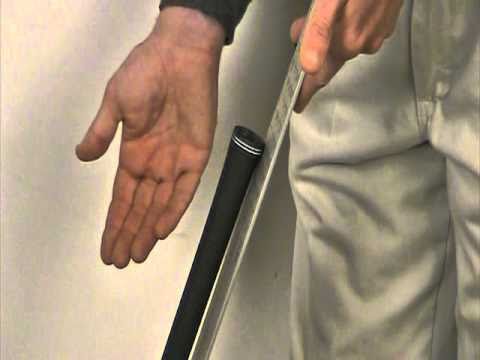
Golf history books are a great resource for avid golf fans. You can learn a lot about the sport from the 1800s up to today. You can learn all about the greatest players, such Clifford Roberts as well as a directory of available golf facilities. The information in these books is not only fascinating but also educational. These books are unbeatable!
Ben Hogan

There are many stories about Ben Hogan, but what really sets him apart from the other golf legends? Hogan is a well-known golfer and philanthropist. His name will always be associated with the Masters. Born in Fort Worth, Texas, Hogan was the third child of Clara Williams and a blacksmith. Hogan lived in Dublin until his family moved from Texas to Fort Worth, Texas in the early 1920s. Ben dropped out Central High School during the senior year. He became a professional golfer six months before his 18th birthday, in 1930. Valerie Fox had been a Sunday school classmate of Hogan in the mid-1920s. Later, the two would reunite in Cleburne Texas where Hogan would marry Valerie Fox.
Clifford Roberts
Although there are a number of people who would dispute the legitimacy of Clifford Roberts' place in golf history books, it is hard to argue with the facts. Roberts was a Wall Street broker who bought 15 percent of Reynolds & Company in 1921, while still a young man. Roberts was born in Morning Sun Iowa. His family moved to Texas. Kansas City. San Diego and finally to Atlanta. Roberts worked in the early years as a traveler wholesale clothes salesman before becoming a Wall Street agent.
Jack Nicklaus
The number of major championship wins attributed to Jack Nicklaus is impressive. The golf legend has won 18 major tournaments, and holds the record of holding the most Masters titles. In addition, he holds joint records in the PGA Championship and U.S. Open. He won two U.S. Amateur Championships. The golf history books include many tips and techniques that will help you improve your game.
Kevin Robbins

Harvey Penick: The Life & Wisdom of the Author is the greatest golf history book. Penick is the most respected golfer of all time. Robbins had the privilege of playing under him at Augusta National in 2000. Penick's climb to the top of golf and the life of the writer who wrote it are all described in this book.
Rick Reilly
In a book titled SO HELP ME GOLF, author Rick Reilly captures many elements of the game, from weird holes around the world to his relationship with Donald Trump. It's not a left-wing political rant. This is a golfer’s takedown on the Trumps. Reilly reveals how a game like golf saved him from chronic anxiety and depression.
FAQ
How can my game improve?
There are many options to improve your golf game. A club could be a good option. A club can help you meet other golfers, and teach you new techniques.
You might also consider buying equipment, such as golf clubs or balls. These items can help you improve your game.
Finally, you could study books on golf. It will help you to understand the game better.
How often should I go to the golf course?
It depends on the amount of time you have. Most people recommend that you practice two times per week.
Four times a week is the ideal number to be an expert golfer.
What is the best way to score points as a golfer?
Points are awarded based on how well a player performs in a competition. There are many different ways that points can be scored in golf. For example, a player could win a tournament outright by scoring more than anyone else. Alternatively, a player might finish second place in a tournament and receive half the prize money that was won by the winner. For placing in the third through 10th places, points are also given. These additional points are called'strokes.
Apart from these official competitions there are many other events that award points for the best performers. A player might be eligible for bonus points if they perform well in a specific event.
What is a par?
Par is the number required to complete one hole. Add up the scores of each player to get the total score.
There are 18 holes in a round of golf. Each hole has its own rating. "Par 3" is the highest-rated hole. It is only three strokes away from the hole. "Par 5" is the lowest rated hole. It is located five strokes from hole.
Statistics
- Professional golfers typically make between 60% and 70% of greens in regulation. (en.wikipedia.org)
- In the United States, the number of people who play golf twenty-five times or more per year decreased from 6.9 million in 2000 to 4.6 million in 2005, according to the [51] (en.wikipedia.org)
- Professional golfers typically make between 60% and 70% of greens in regulation. (en.wikipedia.org)
- In the United States, women made up 25 percent of golfers in 2021, which was up from 19 percent in 2011, and junior female golfers account for 35 percent or 1.1 million golfers.[50] (en.wikipedia.org)
External Links
How To
How to hit the perfect Bunker Shot
A bunker shot refers to a type of shot in golf where your ball is directed at a spot on the green (the hole), and you aim for that spot so it doesn't bounce off the surface. This is done by taking advantage of the slope of the green. The goal is to direct the ball as far as possible towards hole.
Playing golf requires you to determine the best line for reaching your target. You have to consider several factors such as how much distance away you are from the target, what kind of terrain you're hitting through, whether the ball needs to bounce off the ground or fly straight, and even weather conditions.
To achieve a perfect bunker shot, you must first understand its physics. First, decide if you're going uphill and downhill. You will need a drawing club if you are going uphill. You will need to swing with a fade if your face is downhill. Next, determine the speed at which your body can move to stop the ball hitting the green. This is done by measuring how far the ball is from you and which direction it is going. The final step is to measure the size of your bunker.
Once you've figured these things out, you can start swinging. The ball should travel as far as possible past the clubhead, while you must swing slowly enough to keep it from hitting the green. You can start your approach once you have found the right speed, trajectory and direction. Approach the ball slowly until you are close enough to see the landing area. Then, take one last look at the ball before releasing it. If all goes according plan, you will be able to make a perfect bunker shot.